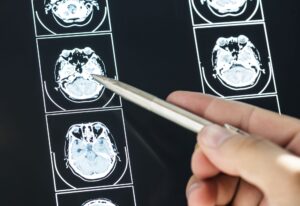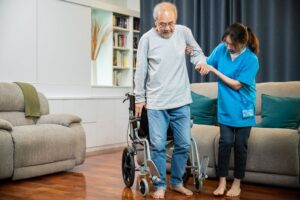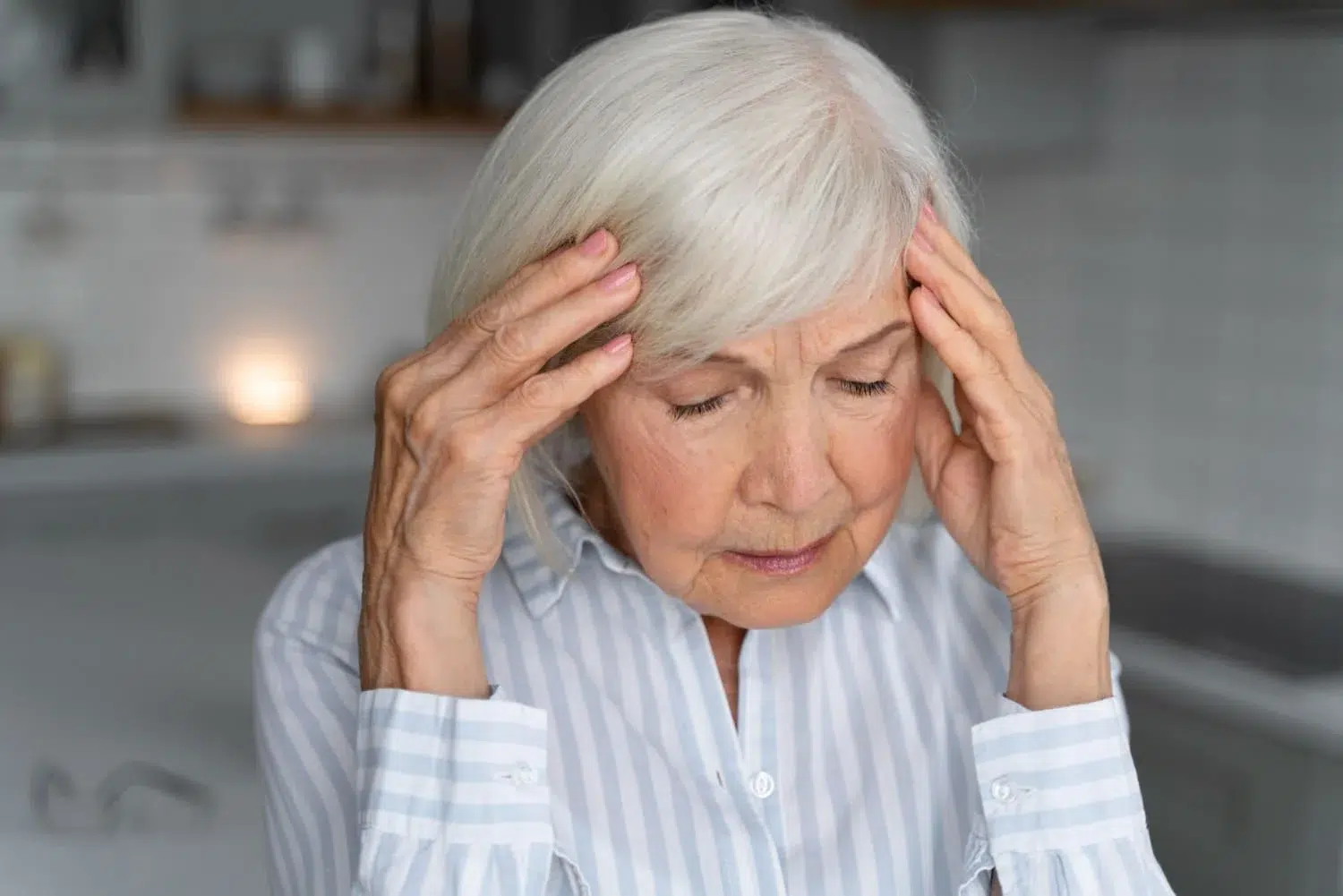How to Recognize Signs of Impending Death After Stroke
Can a stroke kill you? Indeed, strokes are among the main causes of death worldwide, especially in severe cases or when medical assistance is postponed. Understanding signs of impending death after stroke – such as loss of consciousness, acute weakness, or total paralysis – helps identify life-threatening conditions early on. Often indicating significant brain injury, these symptoms might cause death if not addressed quickly. Improving survival and minimizing long-term harm depend on fast response.
Common Signs of Impending Death After Stroke
Having experienced the impact of a stroke on a loved one, I understand the need to know the physical and psychological changes that can indicate the end of life. The stroke weakens the body, which starts to progressively shut down; early recognition of these symptoms can assist in ensuring your loved one is comfortable and well-cared for.
Physical Signs
A decline in the patient’s general state is one of the most often occurring physical signs of impending death after a stroke. Usually beginning with worsening symptoms after stroke, they include more weakness, loss of coordination, or trouble swallowing. The patient could also exhibit disorientation, sleepiness, or tiredness.
Furthermore, a loss of appetite after a stroke is typical in the last phases of life. The patient can lose interest in eating or drinking as the body needs less energy. As the body starts to save its resources, this is an inevitable aspect of the dying process. Along with this, nausea and vomiting might show that the digestive tract is failing.
Emotional Signs
Emotionally, your loved one can seem agitated or distressed. Physical discomfort or an emotional reaction to the knowledge that one is approaching death might cause agitation after a stroke. As the patient’s health deteriorates, restlessness, impatience, or mood swings may show more clearly.
Quiet surroundings, comforting words, and physical reassurance via hand-holding can lessen their mental pain. Helping your loved one feel loved and cared for throughout this trying period makes emotional support equally vital as controlling physical discomfort.
Stroke and Life Expectancy
An individual’s life expectancy after a stroke can be profoundly affected by a stroke; results vary widely depending on age, degree of the stroke, and general state of health of the patient. Understanding how these elements interact can help one better grasp long-term prognosis and survival rates.
Factors That Affect Life Expectancy
- Age: Age is one of the most important determinants of life expectations. Older persons are often less likely to recover totally and more prone to have major strokes. For instance, those over 75 had a far greater death risk after a stroke than younger ones. Further lowering their life expectancy is the fact that elderly people frequently have pre-existing medical issues that might aggravate the consequences of a stroke.
- Pre-existing health conditions: Patients with chronic diseases, including diabetes, hypertension, or heart disease, run more danger of having a fatal stroke. These disorders impair the body’s capacity to heal from a stroke, and sometimes sluggish or partial recovery is the result. Furthermore, more likely to cause secondary issues such as infections or organ failure, which can significantly reduce their life expectancy, are such people.
- Stroke severity: Still another important factor is the degree of the stroke. Often referred to as a transient ischemic attack, or TIA, a little stroke could only modestly affect life expectancy and not have long-term consequences. On the other hand, a large stroke can drastically lower survival rates, either resulting in coma or causing significant brain damage. Patients who develop immobile or comatose following a stroke usually need hospice care for stroke patients; the chances of recovery are low.
Life Expectancy in Bedridden Patients
Following a stroke, bedridden people deal with especially difficult situations. Among the many side effects of immobilization include urinary tract infections, bedsores, and pneumonia. Because they can be challenging to control and can cause sepsis or organ failure, these secondary illnesses can dramatically lower life expectancy. After a massive stroke, bedridden patients usually have a much-reduced life expectancy; family members may have to think about palliative or hospice care to guarantee their loved one is comfortable in their last days.
Fatal Stroke and Its Impact
Particularly if it results in brainstem injury or severe bleeding in the brain, a fatal stroke sometimes causes immediate or near-instant death. In these situations, rather than months or years, life expectancy can be expressed in hours or days. Some patients, on the other hand, survive the first stroke but are left with significant deficits that greatly lower their quality of life and life expectancy.
In these circumstances, choices about end-of-life treatment become quite important. Families may have to investigate choices, including palliative care or hospice, to offer comfort and dignity in the last days, weeks, or months of life.
The Role of Palliative Care and Support for Stroke Patients
When a stroke renders a patient unable to recover or with life-limiting consequences, the emphasis of therapy generally moves to comfort. Here is where palliative care shines, benefiting the patient and their family by reducing symptoms, managing pain, and providing emotional support.
What is Palliative Care?
Palliative care is a specialist medical treatment designed to enhance the quality of life for those with major diseases, including stroke. It is about controlling symptoms and offering respite from the physical and psychological suffering connected with a terminal illness, unlike curative treatments that emphasize recovery or reversal of damage.
Following a stroke, people might have a variety of incapacitating symptoms, including paralysis, severe headaches, dyspnea, and trouble speaking. Usually comprising doctors, nurses, social workers, and chaplains, palliative care teams coordinate to holistically manage these symptoms. This entails not just controlling physical suffering but also offering the patient and their loved ones psychological, spiritual, and emotional assistance.
Comfort Care After a Stroke
Making their remaining time as comfortable as possible is the aim for many stroke sufferers, particularly those in their latter stages of life. Following a stroke, the body could have a variety of upsetting symptoms such as trouble breathing, more discomfort, or anxiety. Trained to provide medicines that reduce these symptoms, palliative care experts help individuals depart with dignity and less suffering.
Comfort care might include:
- Pain management: Stroke patients often experience pain from muscle spasms, immobility, or secondary infections. Palliative care teams use medications and therapies to reduce pain and improve comfort.
- Breathing assistance: Respiratory distress is common after a severe stroke, especially if the stroke affects the part of the brain that controls breathing. Palliative care can provide oxygen therapy and other interventions to make breathing easier.
- Emotional support: A stroke can take an emotional toll on both the patient and their family. Palliative care teams offer counseling, meditation, and other coping strategies to help manage fear, anxiety, and sadness.
Emotional and Spiritual Support
Palliative care addresses more than only the physical features of a terminal illness. A vital part of treatment, emotional and spiritual support helps patients accept the end of life and comforts family members.
Accepting the reality of their illness can be difficult for individuals and cause emotional pain, worry, or melancholy. Social professionals and spiritual counselors included in palliative care teams can help patients negotiate these challenging feelings, therefore providing peace of mind and closure.
Knowing that their loved one is getting compassionate, all-encompassing care helps families lessen the emotional weight of seeing someone fade. Palliative care experts are trained to assist families as they negotiate tough decisions about treatment and end-of-life planning. They make sure the patient and their loved ones feel as supported as they can possibly be.
What Causes Death After a Major Stroke?
For many patients, death after a major stroke results from complications beyond the initial brain injury. Understanding signs of impending death after stroke can help you prepare for what to expect in your loved one’s final moments.
Brain Damage and Organ Failure
A fatal stroke typically results in significant brain damage. Since the brain controls all of the body’s functions, extensive brain damage can lead to organ failure. The heart, lungs, and other organs may begin to shut down, resulting in the body’s inability to sustain itself.
Infections and Complications
Stroke patients, especially those who are bedridden, are at a higher risk of developing infections such as pneumonia or sepsis, which can be deadly. These infections often occur due to weakened immune systems and reduced mobility. Recognizing the signs of death after a stroke -such as unresponsiveness, irregular breathing, and a weakening pulse – can help you understand when your loved one is nearing the end.
The Importance of Compassion and Preparedness
Recognizing the signs of impending death after stroke is crucial for providing the care and comfort your loved one needs in their final days. Whether through palliative care or simply offering emotional support, being present and compassionate can make all the difference.
While a stroke can be devastating, knowing how to respond and what to expect can bring peace to both the patient and their family. Palliative care is a vital resource, offering relief from pain and other symptoms while providing emotional support to those facing the end of life.
By staying informed and understanding the process, you can ensure your loved one experiences the dignity, peace, and care they deserve.







Post Comments